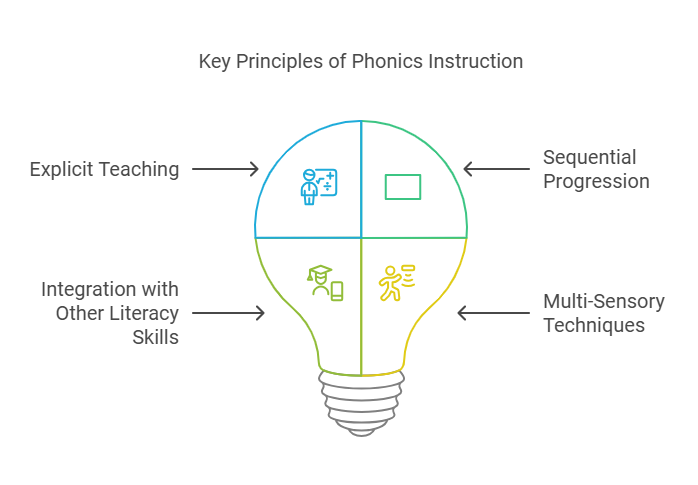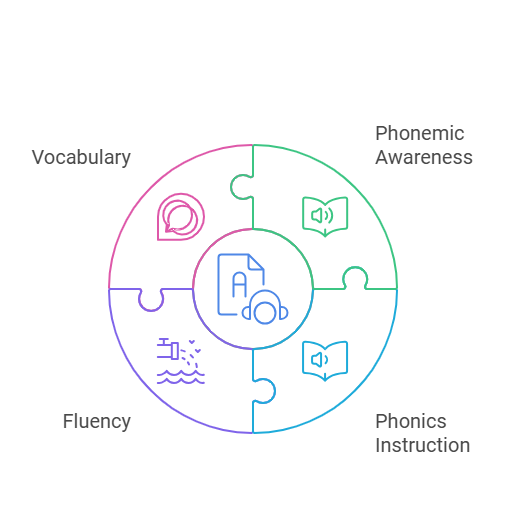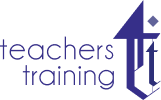Imagine a classroom where every student reads with confidence and enthusiasm. This is the transformative power of phonics. As a fundamental tool in literacy education, phonics bridges the gap between letters and sounds, fostering a robust foundation for reading and writing.
In the UK, phonics plays a crucial role in the National Curriculum, reflecting its proven effectiveness in boosting literacy outcomes. By systematically teaching phonics, educators can ensure that all learners, regardless of age, develop essential reading skills.
This guide aims to provide you with a detailed, step-by-step approach to teaching phonics. We’ll explore practical strategies, engaging activities, and valuable resources tailored for different age groups. Whether you’re a teacher, parent, or tutor, you’ll find the insights needed to enhance your phonics instruction.
Let’s embark on this journey to unlock the full potential of phonics in your teaching practice!
What is Phonics Teaching?

Definition of Phonics Teaching
Phonics teaching is an instructional method that focuses on the relationship between letters and sounds. It helps learners decode written language by teaching them how to recognise and blend sounds to form words, which is fundamental to reading and writing.
Overview of the Phonics Method
The phonics method involves several key components that together build a strong foundation for literacy:
Phonemic Awareness
Phonemic awareness is the ability to hear, identify, and manipulate individual sounds (phonemes) in spoken words. It’s a critical precursor to phonics instruction, as it allows learners to understand that words are made up of these small sounds.
Phonics Instruction
Phonics instruction teaches the relationship between sounds and their corresponding letters or groups of letters. This involves learning how to blend sounds to read words (decoding) and how to segment words into sounds for spelling (encoding).
Fluency
Fluency is the ability to read with speed, accuracy, and proper expression. Phonics contributes to fluency by enabling learners to recognise words quickly and accurately, allowing them to read smoothly without frequent pauses.
Vocabulary
Building a strong vocabulary is essential for understanding what is read. Phonics instruction supports vocabulary development by helping learners decode new words and understand their meanings within different contexts.
Comprehension
The phonics method involves several key components that together build a strong foundation for literacy:
Overview of the Phonics Method
The phonics method involves several key components that together build a strong foundation for literacy:
Importance of Phonics in Literacy Development for All Ages
Phonics is crucial for literacy development at any age. For young children, it provides the foundational skills needed for early reading and writing. For older students and adults, phonics can fill gaps in their literacy skills, improving their reading fluency, comprehension, and overall confidence. By mastering phonics, learners can access a world of knowledge and opportunities through improved literacy skills.
The Benefits of Teaching Phonics
Enhances Reading Skills
Phonics instruction significantly improves reading skills by teaching learners how to decode words effectively. By understanding the relationship between letters and sounds, students can read new and unfamiliar words, increasing their reading accuracy and fluency. This foundational skill enables them to tackle more complex texts with confidence.
Builds a Strong Foundation for Spelling
Phonics not only aids in reading but also plays a crucial role in spelling. By learning the sound patterns and rules associated with spelling, students can accurately spell words and understand spelling conventions. This systematic approach to spelling helps prevent common errors and promotes a deeper understanding of the structure of words.
Promotes Confidence in Learners
As learners become more proficient in reading and spelling through phonics instruction, their confidence grows. This boost in self-esteem encourages them to engage more with reading and writing activities, fostering a positive attitude towards learning. Confident readers are more likely to explore a variety of texts, further enhancing their literacy skills.
Correlation with Academic and Professional Success
Strong literacy skills are closely linked to academic achievement and professional success. Phonics provides a critical foundation for these skills, supporting learners throughout their educational journey and into their careers. Proficient readers tend to perform better across all subjects, as they can comprehend and engage with complex material. Additionally, literacy is a vital skill in most professions, making phonics instruction an investment in future success.
Phonics teaching, therefore, offers numerous benefits that extend beyond the classroom, impacting learners’ academic performance, personal development, and professional opportunities. By prioritising phonics, educators can equip students with the essential skills needed for lifelong success.
How to Teach Phonics: An Overview

Key Principles of Phonics Instruction
Effective phonics instruction is based on several key principles:
- Explicit Teaching: Phonics should be taught explicitly and systematically. This means that the relationships between letters and sounds are directly taught rather than inferred through exposure.
- Sequential Progression: Lessons should follow a logical sequence, starting with simple sounds and letters and gradually moving to more complex combinations and patterns.
- Integration with Other Literacy Skills: Phonics should be integrated with other essential literacy skills, such as vocabulary and comprehension, to create a well-rounded reading program.
- Multi-Sensory Techniques: Using visual, auditory, and kinaesthetic activities helps reinforce learning and caters to different learning styles.
Different Approaches to Teaching Phonics
There are two primary approaches to teaching phonics:
Synthetic Phonics: This approach involves teaching children to convert letters into sounds (phonemes) and then blend these sounds to form recognizable words. It is systematic and starts with teaching individual sounds before moving on to blending them into words. This method is highly effective and widely used in the UK.
- Example: Teaching the sounds /s/, /a/, /t/ separately and then combining them to read the word “sat.”
Analytic Phonics: In this approach, children learn to analyse whole words to detect phonetic patterns and then apply these patterns to decode new words. Rather than learning individual sounds, students learn to recognise letter patterns within words.
- Example: Recognising that “cat” and “bat” share the same “-at” sound pattern.
Importance of Consistency and Repetition
Consistency and repetition are crucial for successful phonics instruction:
- Consistency: Phonics instruction should be regular and systematic, with daily practice to reinforce learning. Consistent instruction helps solidify the connection between letters and sounds.
- Repetition: Repeated exposure to sounds, words, and phonetic patterns is essential for mastery. Repetition through various activities, such as reading aloud, writing, and phonics games, helps learners internalise these skills.
By adhering to these principles and choosing the appropriate approach, educators can create an effective phonics program that supports learners in developing strong reading and writing skills.
How to Teach Phonics Step by Step
Step 1: Phonemic Awareness
Activities to Develop Phonemic Awareness
Rhyming Games: Engage learners in identifying and creating rhyming words (e.g., cat, hat, bat).
Sound Matching: Match objects or pictures to their beginning or ending sounds (e.g., match ‘sun’ to ‘s’).
Segmenting Sounds: Break down spoken words into individual sounds (e.g., /c/ /a/ /t/ for ‘cat’).
Importance of Hearing and Manipulating Sounds
- Phonemic awareness helps learners understand the sound structure of language, enabling them to decode words accurately and improve spelling skills.
Step 2: Phonics Instruction
Teaching Letter-Sound Relationships
- Introduce letter-sound correspondences systematically, starting with common sounds and progressing to more complex ones.
- Use visual aids and interactive activities to reinforce letter-sound connections.
Blending Sounds to Form Words
- Guide learners in blending individual sounds to read words (e.g., /c/ /a/ /t/ blends to ‘cat’).
- Provide ample opportunities for practice with decodable texts and word games.
Segmenting Words into Sounds
- Teach learners to segment words into their component sounds for spelling and decoding purposes.
- Practice segmenting through activities such as word dictation and phoneme isolation exercises.
Step 3: Fluency Practice
Techniques to Build Reading Fluency
- Repetitive Reading: Encourage learners to read passages multiple times to increase speed and accuracy.
- Choral Reading: Read aloud together as a group to improve pacing and fluency.
- Use of Decodable Texts: Provide texts that align with learners’ phonics skills to reinforce fluency development.
Step 4: Vocabulary Development
Introducing New Words in Context
- Contextualise new vocabulary words within meaningful sentences or stories.
- Discuss word meanings and encourage learners to use new words in sentences.
Visual Aids and Word Walls
- Create visual aids, such as word walls or vocabulary charts, to reinforce word meanings and spelling patterns.
- Display high-frequency words and phonetically regular words prominently for reference.
Encouraging Learners to Use New Vocabulary in Speech and Writing
- Provide opportunities for learners to practise using new vocabulary in conversations, discussions, and written assignments.
- Offer feedback and reinforcement to build confidence in using words accurately and appropriately.
Step 5: Comprehension Skills
Strategies to Improve Reading Comprehension
- Asking Questions: Encourage learners to ask and answer questions about the text to deepen understanding.
- Making Predictions: Prompt learners to predict what might happen next in a story based on clues from the text.
- Summarising Stories and Texts: Teach summarisation skills by identifying main ideas and key details in texts.
By following these structured steps and incorporating engaging activities, educators can effectively teach phonics while fostering a strong foundation in reading, fluency, vocabulary, and comprehension skills. These steps cater to learners of all ages and abilities, ensuring comprehensive literacy development.
What are the Four Steps in Teaching Phonics?

Phonics teaching involves four key steps that are essential for building strong literacy skills in learners of all ages. Each step plays a crucial role in the development of reading, fluency, vocabulary, and comprehension abilities.
1. Phonemic Awareness
Explanation: Phonemic awareness is the ability to hear, identify, and manipulate individual sounds (phonemes) in spoken words. It forms the basis for phonics instruction by helping learners understand the sound structure of language.
Detailed Description: Activities such as rhyming games, sound segmentation, and blending exercises are used to develop phonemic awareness. These activities teach learners to isolate and manipulate sounds, which is essential for reading and spelling.
Practical Tips: Use multisensory activities like manipulative letters, sound boxes, and oral blending and segmenting games. Provide frequent opportunities for practice and reinforcement to strengthen phonemic awareness skills.
2. Phonics Instruction
Explanation: Phonics instruction teaches the relationship between letters (graphemes) and sounds (phonemes). It helps learners decode words by associating sounds with letters or letter combinations.
Detailed Description: Lessons progress from teaching single letter sounds to more complex phonics rules and patterns. This systematic approach includes teaching vowel digraphs, consonant blends, and other phonetic rules.
Practical Tips: Use a structured phonics programme that introduces phonics concepts gradually. Incorporate visual aids, interactive games, and decodable texts to reinforce letter-sound relationships. Provide opportunities for both individual and group practice.
3. Fluency
- Explanation: Fluency refers to the ability to read accurately, quickly, and with expression. It involves automatic recognition of words and smooth, natural reading.
- Detailed Description: Fluency practice includes strategies to improve reading speed, accuracy, and prosody. Techniques like repeated reading, choral reading, and timed readings help develop fluency.
- Practical Tips: Provide decodable texts at appropriate reading levels for fluency practice. Model fluent reading and encourage learners to read aloud regularly. Use fluency-building activities such as reader’s theatre and echo reading.
4. Vocabulary
- Explanation: Vocabulary development focuses on expanding learners’ knowledge of words and their meanings. It enhances reading comprehension and overall language proficiency.
- Detailed Description: Vocabulary instruction includes introducing new words in context, teaching word meanings, and promoting word usage in speech and writing.
- Practical Tips: Embed vocabulary instruction within content areas and literature. Use word walls, semantic maps, and graphic organisers to reinforce vocabulary learning. Encourage learners to use newly learned words actively in discussions and writing assignments.
Implementing these four steps in phonics teaching ensures a comprehensive approach to literacy development. By addressing phonemic awareness, phonics instruction, fluency, and vocabulary systematically and creatively, educators can support learners in becoming confident and proficient readers and communicators. These steps are adaptable across various learning environments, making them effective tools for both classroom instruction and individualised learning support.
Teaching Phonics to Different Age Groups
Teaching Phonics to Young Children
Age-Appropriate Methods and Activities
- Phonics Games: Use interactive games like “I Spy,” treasure hunts for letter sounds, or phonics bingo to engage young learners.
- Songs and Rhymes: Incorporate catchy songs and rhymes that focus on letter sounds and phonetic patterns.
- Hands-On Activities: Use manipulatives such as magnetic letters, sandpaper letters, or letter blocks for tactile learning experiences.
Engaging Young Learners Through Games and Songs
- Create a playful and stimulating environment where phonics activities are integrated into everyday play and routines.
- Use colourful visuals and props to make phonics learning enjoyable and memorable.
- Encourage participation and enthusiasm through praise and positive reinforcement.
Teaching Phonics to Older Children and Teenagers
Adapting Phonics Instruction to Older Learners
- Relevance: Relate phonics instruction to real-world applications, such as decoding complex words in academic texts or technical manuals.
- Advanced Phonics Rules: Teach advanced phonics rules, including vowel digraphs, silent letters, and syllable division rules.
- Word Analysis: Analyse multisyllabic words and focus on strategies for decoding unfamiliar vocabulary.
Addressing Gaps in Phonics Knowledge
- Diagnostic Assessment: Identify specific areas of phonics where older learners may need reinforcement or remediation.
- Differentiated Instruction: Tailor instruction to address individual learning needs and preferences.
- Review and Practice: Provide opportunities for review and consolidation of phonics skills through targeted practice activities.
Teaching Phonics to Adults
Importance of Phonics in Adult Literacy
- Foundation for Literacy: Highlight how phonics provides a foundational skill set for improving reading and writing abilities in adult learners.
- Employability: Emphasise the relevance of phonics in enhancing employability and accessing further education opportunities.
- Lifelong Learning: Position phonics as a tool for lifelong learning and personal development.
Practical Strategies for Adult Learners
- Contextualised Learning: Integrate phonics instruction with topics of interest or relevance to adult learners, such as workplace communication or daily living skills.
- Flexible Learning Formats: Offer flexible learning formats, including online courses, self-paced modules, and small group sessions.
- Supportive Environment: Create a supportive and non-judgemental learning environment to encourage adult learners to take risks and participate actively.
Overcoming Stigma and Fostering a Positive Learning Environment
- Positive Reinforcement: Celebrate successes and progress made by adult learners in mastering phonics skills.
- Open Communication: Encourage open dialogue about the importance of phonics and its role in overcoming literacy challenges.
- Peer Support: Facilitate peer support networks or buddy systems to enhance motivation and confidence among adult learners.
By tailoring phonics instruction to the specific needs and developmental stages of each age group, educators can effectively nurture literacy skills and empower learners to succeed in their academic and personal journeys. These strategies ensure that phonics instruction is engaging, relevant, and supportive across diverse learning contexts.
Challenges and Solutions in Phonics Teaching
Common Challenges Faced by Teachers and Students
Dyslexia and Other Learning Difficulties
- Challenge: Students with dyslexia or other specific learning difficulties may struggle with phonics instruction due to difficulties in decoding and processing sounds.
- Solution: Provide individualised support through targeted interventions such as phonological awareness training, multisensory approaches, and assistive technologies like text-to-speech tools. Use structured literacy programmes designed for learners with dyslexia that incorporate systematic phonics instruction alongside other strategies.
Language Barriers
- Challenge: Students with limited proficiency in the language of instruction may find it challenging to grasp phonics concepts and apply them effectively.
- Solution: Implement scaffolded instruction that includes visual aids, gestures, and simplified language explanations. Use bilingual resources where possible to support understanding. Encourage peer tutoring and provide additional support in the student’s native language to bridge comprehension gaps.
Overcoming Stigma and Fostering a Positive Learning Environment
- Positive Reinforcement: Celebrate successes and progress made by adult learners in mastering phonics skills.
- Open Communication: Encourage open dialogue about the importance of phonics and its role in overcoming literacy challenges.
- Peer Support: Facilitate peer support networks or buddy systems to enhance motivation and confidence among adult learners.
By tailoring phonics instruction to the specific needs and developmental stages of each age group, educators can effectively nurture literacy skills and empower learners to succeed in their academic and personal journeys. These strategies ensure that phonics instruction is engaging, relevant, and supportive across diverse learning contexts.
Practical Solutions and Strategies
Differentiated Instruction
- Challenge: Classrooms often include students with varying levels of phonics knowledge and learning styles, making it challenging to meet individual needs.
- Solution: Differentiate instruction by offering varied activities and tasks that cater to different learning preferences and abilities. Use pre-assessments to tailor instruction, provide flexible grouping options, and adjust pacing and complexity of tasks as needed.
Use of Multi-Sensory Techniques
- Challenge: Some students may struggle with traditional phonics instruction methods that rely primarily on auditory input.
- Solution: Incorporate multisensory techniques such as tactile activities (e.g., tracing letters in sand), visual aids (e.g., flashcards, charts), and kinesthetic exercises (e.g., using body movements to represent sounds). Engage multiple senses to reinforce learning and accommodate diverse learning styles.
Addressing these challenges through targeted interventions and inclusive teaching practices ensures that all students have equitable access to effective phonics instruction. By employing flexible strategies and supportive resources, educators can create a positive learning environment where every learner can succeed in developing essential literacy skills.
Resources for Phonics Teaching
Recommended Phonics Programmes and Materials
- Jolly Phonics: A popular programme that uses a synthetic phonics approach with actions for each sound, suitable for early years and primary education.
- Read Write Inc. Phonics: Known for its systematic and structured approach to teaching phonics, focusing on blending, segmenting, and letter formation.
- Letters and Sounds: Used widely in UK schools, offering comprehensive resources and activities for teaching phonics from Reception to Year 2.
Digital Tools and Apps for Phonics Instruction
- Phonics Hero: A gamified app that offers interactive phonics games and activities aligned with the National Curriculum.
- Teach Your Monster to Read: An award-winning game that helps children practise phonics and reading skills in a fun and engaging way.
- Starfall: Provides interactive phonics activities and stories suitable for early learners to develop reading skills.
Linking to External Resources and Further Reading
- The Phonics Screening Check: Information and resources provided by the Department for Education (DfE) UK to support schools in administering and interpreting the phonics screening check.
- PhonicsPlay: Offers a range of free and subscription-based phonics games, activities, and resources for teachers and parents.
- Oxford Owl: Provides free eBooks, teaching tips, and phonics activities to support home and school learning.
For educators looking to deepen their understanding and expertise in phonics teaching, we recommend exploring the Teaching Phonics Level 3 Certification course offered by The Teachers Training. This course provides comprehensive training on effective phonics instruction strategies, assessment techniques, and practical classroom applications. It is designed to enhance professional development and equip educators with the skills needed to deliver high-quality phonics teaching.
These resources and courses offer valuable support and enrichment for phonics teaching, catering to educators at all stages of their professional journey. Whether you’re seeking foundational programmes or advanced professional development opportunities, these resources ensure effective phonics instruction that fosters literacy success in learners.
Conclusion
Phonics teaching stands as a cornerstone of literacy education, equipping learners with essential skills to decode words, build fluency, expand vocabulary, and comprehend texts. By systematically teaching phonics, educators empower students of all ages to become confident and proficient readers and writers.
Throughout this guide, we’ve explored the fundamental steps of phonics teaching, from developing phonemic awareness to enhancing reading comprehension. We’ve also highlighted the diverse strategies and resources available to support effective phonics instruction, catering to different learning needs and preferences.
Importance and Benefits of Phonics Teaching
Phonics instruction lays the groundwork for lifelong literacy success. It enhances reading skills, fosters spelling proficiency, boosts confidence in learners, and correlates with academic and professional achievements. By mastering phonics, students gain access to a world of knowledge and opportunities.
Throughout this guide, we’ve explored the fundamental steps of phonics teaching, from developing phonemic awareness to enhancing reading comprehension. We’ve also highlighted the diverse strategies and resources available to support effective phonics instruction, catering to different learning needs and preferences.
Utilise the Provided Steps and Resources
We encourage educators to implement the outlined steps in their teaching practice. From phonemic awareness activities to fluency practice and vocabulary development, each step plays a vital role in nurturing strong literacy skills. Explore recommended phonics programmes, utilise digital tools and apps, and access external resources to enrich phonics instruction in the classroom.
Throughout this guide, we’ve explored the fundamental steps of phonics teaching, from developing phonemic awareness to enhancing reading comprehension. We’ve also highlighted the diverse strategies and resources available to support effective phonics instruction, catering to different learning needs and preferences.





